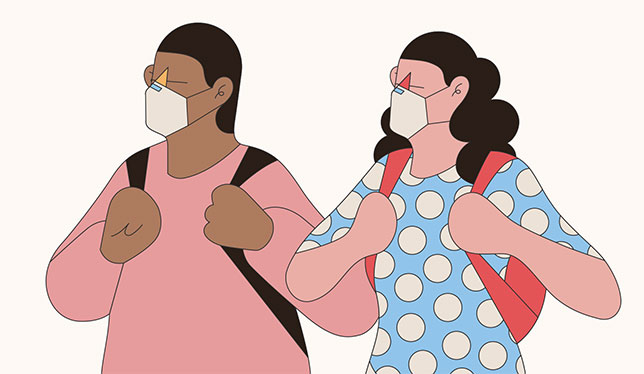Part 1. Streamed lectures and empty seats: what classrooms will look like this fall
By Emily Baron Cadloff
Patrick McBrine has spent many hours over the spring and summer teaching himself how to make professional-looking videos at home. Working with various types of editing software, Dr. McBrine, an assistant professor of English at Bishop’s University, now knows how to splice videos together, separate audio tracks, add graphics and transitions, and make the final result look polished and ready for viewers. In transitioning his communications and literature courses to online learning, he’s spending a lot of time thinking about how his students interact with the subject. “Some of the concepts which have been difficult for me to articulate over the last decade are now crystallized in a way I’ve never been forced to do before.”
Dr. McBrine is one of the many thousands of instructors across Canada shifting their face-to-face classes this fall to online formats in response to the ongoing pandemic. The extent of that shift varies from institution to institution depending on the particularities of their respective campuses, the current conditions in their local communities and the dictates of public health authorities – and plans continue to evolve by the day. Nevertheless, the enormity of the transition is unprecedented in the history of Canadian higher education.
Some universities have moved almost the entirety of their courses online for the fall term and, for the most part, students will not need to be on campus. Carleton University is one such institution, having announced relatively early on that all scheduled undergraduate and graduate courses for the fall will be delivered online, and that all lab activities associated with undergraduate courses will be conducted remotely. In a message to the community in early July, Carleton president Benoit-Antoine Bacon said: “We remain hopeful that it will be possible to welcome some students back to campus in January.”
Most universities, however, plan to offer a hybrid, or blended, model of teaching this fall. Generally, that means the majority of courses will be taught online, with face-to-face instruction used only when necessary, such as for hands-on labs, studio work and courses that would be difficult to teach remotely.
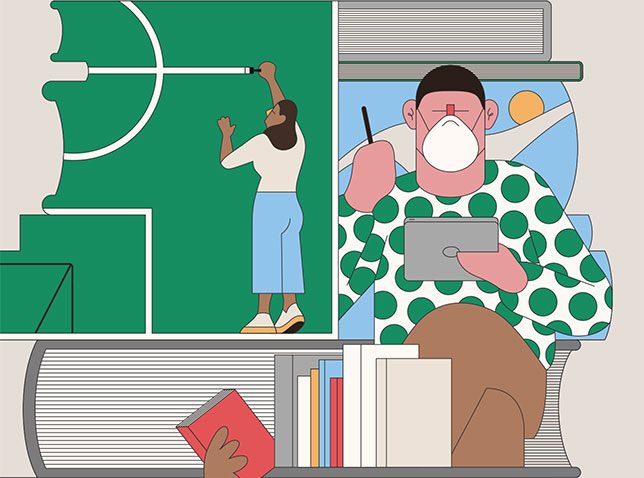
But, for each university there are variations. Mount Saint Vincent University, for example, will be working with a hybrid model, but instead of offering labs in person during the fall semester, the university will be postponing the necessary hands-on instruction until January for a week-long intensive bootcamp of sorts. Brandon University, meanwhile, will be mostly online but will offer some in-person classes in music and the arts, and will also ensure that students have access to computer labs.
David Docherty, Brandon U’s president, says he’s aware that computer and internet access aren’t always guaranteed at home for students. “We made sure there was computer space on campus, and we were able to identify as many students as possible and give them a key fob to get into this computer lab, and we made provisions to wipe down computers and be safe.”
Ken Steele, a higher education strategist, has been collecting data on universities’ teaching and learning plans for the fall. He’s not optimistic about a swift return to campus. “We must plan for online delivery throughout the upcoming academic year. Any other announcement is just wishful thinking and semantics,” he wrote in an opinion article for University Affairs in May. He is more optimistic for the longer term, however. “Canada has always been perceived as a safe place,” he says in a recent interview. “If we do this well and the curve stays flat, then it will make us even more attractive in two or three years when international enrolment starts to pick up again.”
And then there’s a handful of universities in Canada going against the grain. Redeemer University expects about 85 percent of its 850-person student body to return to campus come September. The faith-based institution plans to outfit students with their own personal, protective barriers that will be carried to classes and sanitized frequently.
In a school-wide survey, the majority of Redeemer students indicated they would prefer to be on campus for the fall. But, for those students studying remotely, Redeemer plans a dual-delivery model, live-streaming all class lectures for synchronous learning. Similarly, Canadian Mennonite University, another faith-based institution, plans to have a full slate of in-person classes this fall, augmented by some hybrid features online.
David Zietsma, Redeemer’s provost and vice-president, academic, says his institution has invested close to $800,000 in technology that will help instructors to broadcast their classes. “If emergency orders are raised to the point where we can’t have face-to face-learning, we can shift fairly seamlessly.”
Dr. Zietsma says the school’s small size should work to its benefit. “We have a thousand-seat auditorium that obviously won’t be in use this fall. Therefore, if we do have a class of 60 students, putting that class in the auditorium for the face-to-face component while live-streaming it allows everyone to be physically distanced.”
While Redeemer students appear eager to return to campus, most students across Canada seem a bit more conflicted. In a survey conducted by the Canadian Alliance of Student Associations, students list a number of worries for the upcoming semester. The virus is a big concern, but so is access to high-speed internet service and computers. CASA chair Bryn de Chastelain says students also worry that they could lose out on the full university experience – “simple things, like going to see a professor during their office hours or being able to interact with your peers during a break in a class,” he says.
As well, many students question whether a majority-online schedule is worth their tuition dollars. CASA’s survey found 41 percent of students have deferred or are considering delaying their studies this year, while another 30 percent say they have decided to study part-time. The chaotic end of the winter 2020 semester, with its shift to emergency remote teaching, “has left a resounding feeling for students of dissatisfaction,” says Mr. de Chastelain.
It’s that feeling of dissatisfaction that Dr. McBrine at Bishop’s is aiming to counter with his virtual classes. He recognizes that he and other professors have serious challenges to overcome, starting with flagging energy levels as students stare at their computer screens for hours at a time. “Everything we know tells us that’s not healthy,” he says.
Dr. McBrine’s classes will be offered asynchronously, which means students can take them on their own schedule. The flexibility offers certain benefits, but it means that professors and students lose out on “reading the room” and having a more free-flowing conversation, or pivoting to an interesting tangent brought up in discussion. And there’s no denying that some professors are wary of the changes, he says.
“It does mean more preparation for classes, which is tough in the summer months when you’re trying to recharge. So, it’s not the best-case scenario,” he says. To counter that, Bishop’s has offered twice-weekly Zoom sessions, offering help to professors as they work on their transition plans. Dr. McBrine spoke at one of these virtual staff meetings in June, offering tips on his newfound video skills. “I love the fact that we’ve been all forced together in this situation. It’s not a punishment, it’s a chance to rise to the occasion.”
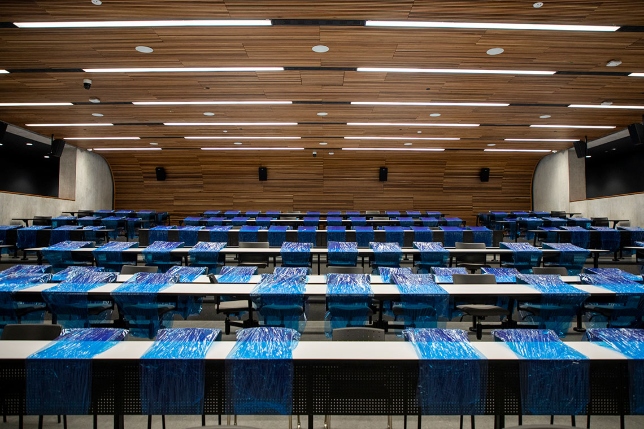
Part 2. A virtual welcome: online orientation and support for first-year students
By Shauna McGinn
With the prospect of a mainly virtual fall semester, universities are faced with the challenge of making incoming students feel a genuine connection to their new school. Some student services professionals say the process has made them rethink core aspects of the first-year experience.
Tanya Bradley, manager of student and community experience at Brock University, says making orientation more accessible virtually was already a long-term goal for the school’s orientation planning committee. The committee, which includes representation from student groups, designed BU4U, a suite of online programming that will stand in place this year for the usual in-person orientation activities.
“Having offerings available online will allow us to expand our scope and reach,” says Ms. Bradley. “This has been something that we were looking to build … to support the diversity of our student body. We’re just having to do it now.” BU4U includes an online course called BrockU 101, which gives an overview of academic support at the school. Students will also be placed in various “engagement communities,” which are online groupings with other students in their faculty, overseen by a peer mentor.
At the University of Lethbridge, the Early Start Experience, or ESE, ran as a pilot program last year, operating as an in-person course that took place two weeks before the fall semester. Shelly Wismath, dean of the school of liberal education and co-creator of the course, says the goal is to prepare students for university life with a blend of traditional orientation and academic theory.
When she first learned that the ESE would have to run online this year, she says she was worried it would lose its essence, since the opportunity for students to meet one another and faculty members in an intimate environment was such a well-regarded aspect of the course. “But the more I thought about it, the more we realized in our conversations that we still have a huge amount to offer,” Dr. Wismath says.

Dr. Wismath has been hosting introductory Zoom calls with ESE participants since the start of the summer. “They’re really eager to get involved and get connected,” she says. “That reassured me that there’s still a need for this and we can still offer something pretty special … in fact this group probably needs it more than ever.” Dr. Wismath says they’ve hired six upper-year students to work as teaching assistants for the course, who will focus on helping the first-year students adjust to an online learning environment.
It’s a similar situation with the new Archway program at McMaster University, which has been designed to recreate the structure of the school’s residence-life system (all of the university’s classes for the fall term will be online and student residences are restricted to a limited number of students facing exceptional circumstances). Sean Van Koughnett, McMaster’s associate vice-president, students and learning, and dean of students, says when he learned that first-year students wouldn’t be living on campus, one of the things he thought of was the team of upper-year students who work in residence and are trained to help deliver the first-year experience. “I thought, let’s try to mimic some of the benefits of a residence experience, in that you’re meeting peers, you’re supported by upper-year students, and you’ve got some professional staff who are helping you navigate the university environment,” he says.
Each incoming student will be automatically enrolled in the Archway program and, similar to the BU4U initiative, will be organized in groups of around 30 to 40 alongside an upper-year mentor, known as an Archway coach. Since online learning can be challenging, Mr. Van Koughnett says he thinks there could be a higher risk of students dropping out midway through the semester, which is why it’s important to have a structure where issues can be identified early on. “Part of the thinking behind Archway is that if they’ve got additional support and someone who’s proactive in reaching out to them, that will get them through those valleys,” he says.
Mr. Van Koughnett says an unintended benefit of having to move orientation online has been the ability to reach a wider audience of new students. Each year, about one-third of first years don’t live in residence, so there’s always a portion that doesn’t necessarily get the same orientation experience. But this year, he says, the university is set up to directly reach every new student in an unprecedented way.
“Of course we’d all rather be in person and on campus,” Mr. Van Koughnett says. “But we’re going to learn through this, take the best parts of what we’ve been able to do during the pandemic and carry it forward.”
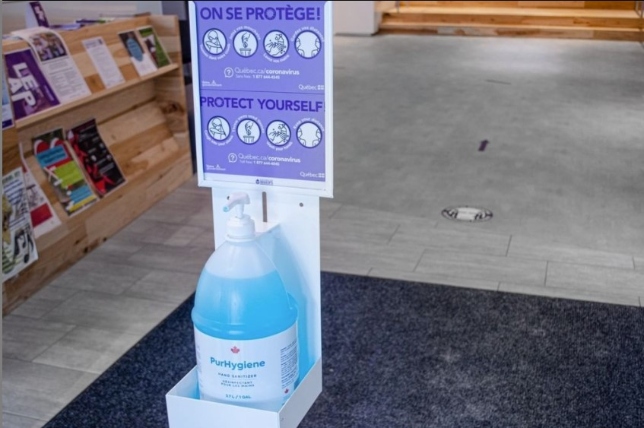
Part 3. Masks, hand-sanitizing stations and single residence rooms: prepping to keep campuses safe
by Mark Cardwell
A university campus is a lot like a town or village, says Vivek Goel, a professor at the Dalla Lana School of Public Health at the University of Toronto. “It’s not just a school, there is so much more going on,” says Dr. Goel, who recently stepped down as vice-president, research and innovation, at the university so he can devote his time to guiding its pandemic response. “We deal up front with the same public health issues that face any community.”
That’s why, he adds, life will be different at the university this fall as tens of thousands of students, faculty and staff return to campus amid the ongoing global pandemic. In a mid-July update, U of T president Meric Gertler said more than 90 percent of undergraduate courses will feature online delivery, either synchronous or asynchronous. However, at least one-third of courses will also have an in-person component.
Among the many health and safety measures that have been put in place are the installation of hundreds of hand-sanitizing stations across U of T’s three campuses, and ubiquitous signs instructing people to practise physical distancing and ensure proper hygiene. Yet more signage indicates the maximum occupancy in rooms and elevators, and direct the flow of foot traffic in campus buildings.
Classrooms, offices, libraries, meeting rooms and teaching labs, among other spaces, have been rearranged to space out seating, while plexiglass acrylic sheets and other physical barriers have been installed in cafeterias and service counters. In addition, everyone on campus will be asked to wear masks in indoor spaces as a temporary measure, says Dr. Goel. A growing number of universities across the country are requiring that masks be worn indoors; in Quebec, all universities have been mandated by the provincial government to do so.
U of T has also reduced residence capacity, making all rooms single occupancy for incoming students, and will clean and disinfect all public spaces and amenities regularly. It is a scene being played out, to varying degrees, at nearly every other university this fall. “As a school our guiding principles are achieving educational excellence and building a sense of community,” says Dr. Goel. “But keeping people safe is our top priority.”
Finding and implementing the right mix of measures to ensure everyone stays safe – and ensuring the proper processes are in place to deal with those who fall ill – has proven to be a major challenge for universities. “There’s no pandemic playbook where we can turn to page 19 and see what it is we need to do,” says Darcy Marciniuk, a professor of medicine and associate vice-president, research, at the University of Saskatchewan.
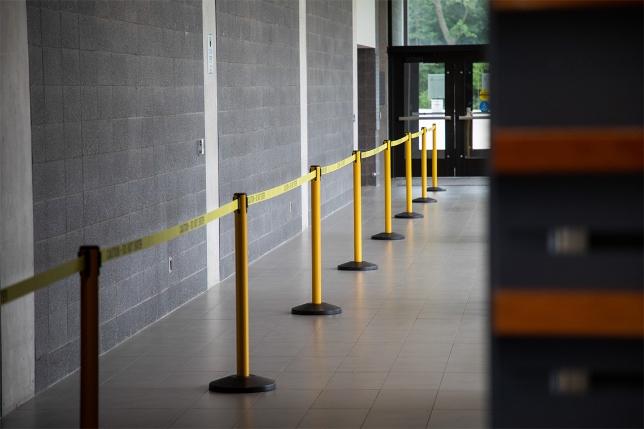
A respirologist who was tapped to chair the university’s crisis response team when the pandemic hit full force in mid-March, Dr. Marciniuk says much has been done to make the campus safe. In addition to the omnipresent signage and passive health monitoring through temperature checks and the like, Dr. Marciniuk says some campus buildings have been closed to reduce the number of places that need to be cleaned and monitored. The university has instructed most students to plan for remote classes, with very limited in-person instruction.
“People will not have free access to everything like they normally would,” says Dr. Marciniuk. Echoing U of T’s Dr. Goel, he adds: “Our guiding principle is to not allow the pandemic to spread. Safety is the overriding concern right now.”
The same thinking holds true for smaller universities located in rural or more remote regions where the numbers of COVID-19 infections have remained low. “We’ve had zero cases on campus,” says Acadia University president Peter Ricketts. “We’ve been very fortunate – but we’re still very concerned.”
Dr. Ricketts says the university has developed safety protocols and guidelines similar to what other universities are doing, in accordance with public health recommendations. But, unlike most universities, Acadia would prefer to see its students return to campus. “The vast majority of both returning and new students want to come back,” says Dr. Ricketts. “They want and choose that small university environment over online learning.”
To meet that desire, and to diminish the threat of infection, Acadia decided to push back the start of classes until September 21 to allow students time to self-isolate after arrival (any individuals coming from outside the four Atlantic provinces must self-isolate for two weeks upon arrival). “We simply couldn’t have the usual moving in and orientation,” says Dr. Ricketts. “So we decided to stagger people on the days and times they arrive.”
Delaying the fall term, he adds, will also give more time for new students to become acclimatized to campus life and take new orientation courses dubbed University 101. “They finished high school in a very haphazard manner,” says Dr. Ricketts. “These courses will help them to settle in.”
Over in neighbouring New Brunswick, Mount Allison University is asking students to arrive two weeks earlier than usual to allow them to self-isolate before classes start. On Prince Edward Island, premier Dennis King instructed his public health office to look into booking off-campus hotel rooms to house returning out-of-province and international students for their 14-day self-isolation period.
In Quebec, the province hit the hardest by the pandemic, universities there have also been working hard to reassure and protect students, faculty and staff. “It’s not business as usual, that’s for sure,” says Marie-Karlynn Laflamme, director of public affairs at Université du Québec à Chicoutimi. “We’ve had to cancel all the usual orientation and initiation events, like our annual rector’s lunch,” she says. “But we’re working with student associations and faculty to find other ways for students to connect with the campus community, which is such a big part of university experience and a key to retention.”
According to Ms. Laflamme, the biggest challenge is trying to accommodate the university’s international students, who make up nearly a quarter of its 6,500 students. It’s still unclear how many of these students, most of whom are from France, will be able to come in person. As for incoming students from within Quebec, Ms. Laflamme says the university is trying to ensure that all have at least one class on campus with in-person instruction.
In late May, the Quebec government requested that all postsecondary institutions in the province prepare scenarios that would see at least 30 percent of students return to campus. Most of the province’s larger institutions, including Université de Montréal, McGill University and Université Laval, have announced that courses will take place primarily online.
Concordia University, for its part, says courses this fall will be delivered “almost entirely online, accessible anytime, from anywhere in the world.” The university has additionally suspended all residence operations for the entire 2020-2021 academic year. In a note to students, Concordia president Graham Carr said it will be “a fall term unlike any other.”
